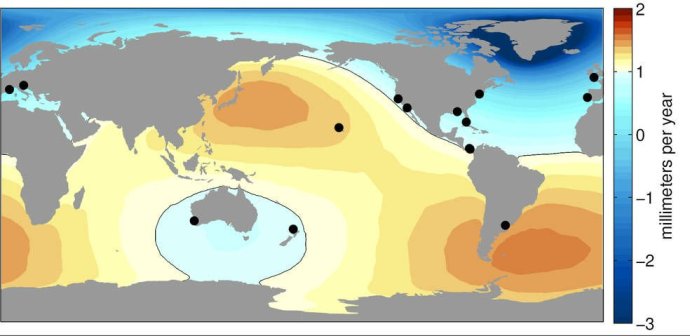Sea levels are rising, and that’s bad news for humans in the mid to long term. Earlier this year, it was estimated that our current rate of climate change – even with the Paris Agreement in place – would lead to sea levels rising by six metres. That, as the included gallery suggested, would do pretty terrible things to places where we humans like to live.

Well now that you’re suitably miserable, allow me to add another layer of sadness: NASA reckons we’ve actually been underestimating how much the sea level rose over the last century – in some places by as much as 28%.
Previously our estimates were that global sea levels rose by around 5.5in over the 20th century, but researchers from NASA’s Jet Propulsion Laboratory and the University of Hawaii at Manoa now believe that is “highly unlikely,” and the true figure is closer to 6.7in. By applying our established sea-level estimates to new climate models, the paper discovered that they were some way off the real-world picture.
“It’s not that there’s something wrong with the instruments or the data, but for a variety of reasons, sea level does not change at the same pace everywhere at the same time,” explained Philip Thompson from the University of Hawaii. “As it turns out, our best historical sea-level records tend to be located where past sea-level rise was most likely less than the true global average.”
These places specifically were 15 gauges set up across America and Europe, but unfortunately they also happened to be the points where sea-level rises were lower than the global average. It may seem a little counterintuitive, but sea levels rise the farthest in areas that are further away from the melting ice. So the gauges were at the right source for melting ice, but the recorded impact wasn’t as severe as spots further away – the southern Pacific ocean, for example.
On top of this, the researchers also considered the effect of something called “ice melt fingerprints” – sea-level change impacted by changes to the Earth’s rotation and local gravity as large masses of ice melt.
“This is really important, because it provides answers to the question about how melt fingerprints and the influence of wind on ocean circulation affect our ability to estimate past sea-level rise,” said Thompson. “These results suggest that our longest records are most likely to underestimate past global mean change and allow us to establish the minimum amount of global sea-level rise that could have occurred during the last century.”
The result is that the impact of the Alps melting has been underestimated by around 5%, while Greenland ice melting has caused sea-level rises around 28% higher than we previously thought.
But at least we have better methodology now in order to track and predict our impending disaster, eh?
Image: NASA Goddard, used under Creative Commons
Disclaimer: Some pages on this site may include an affiliate link. This does not effect our editorial in any way.











